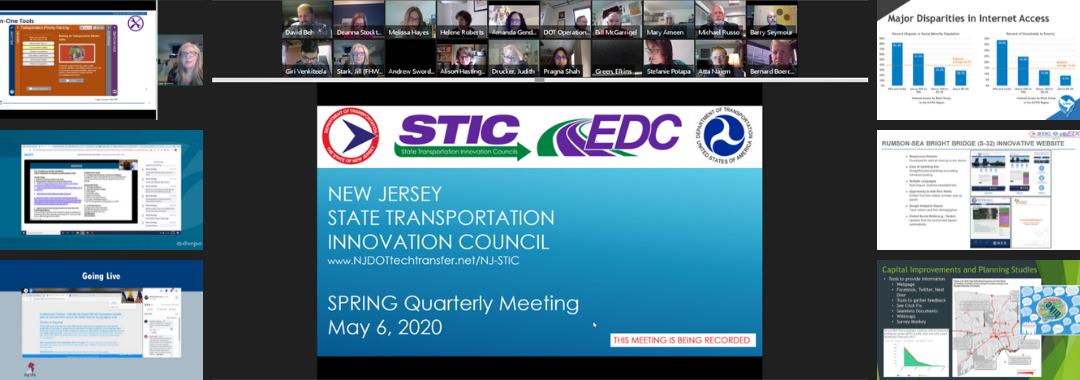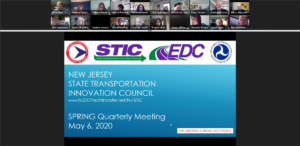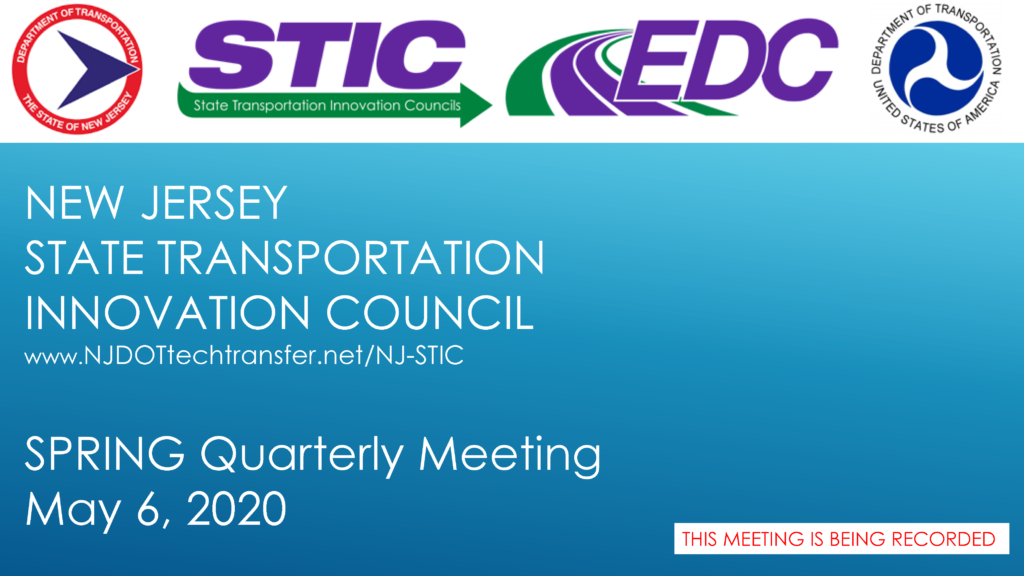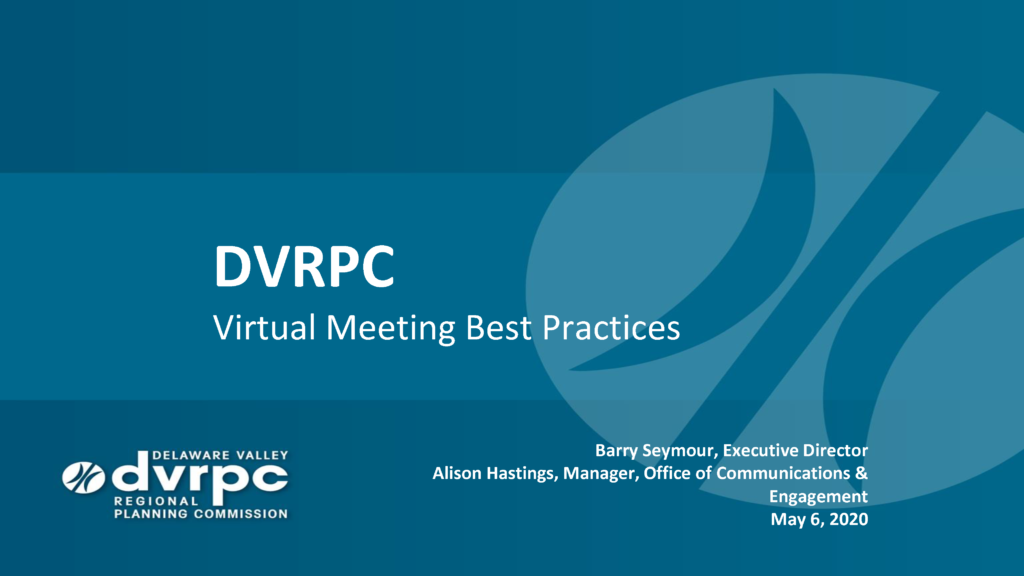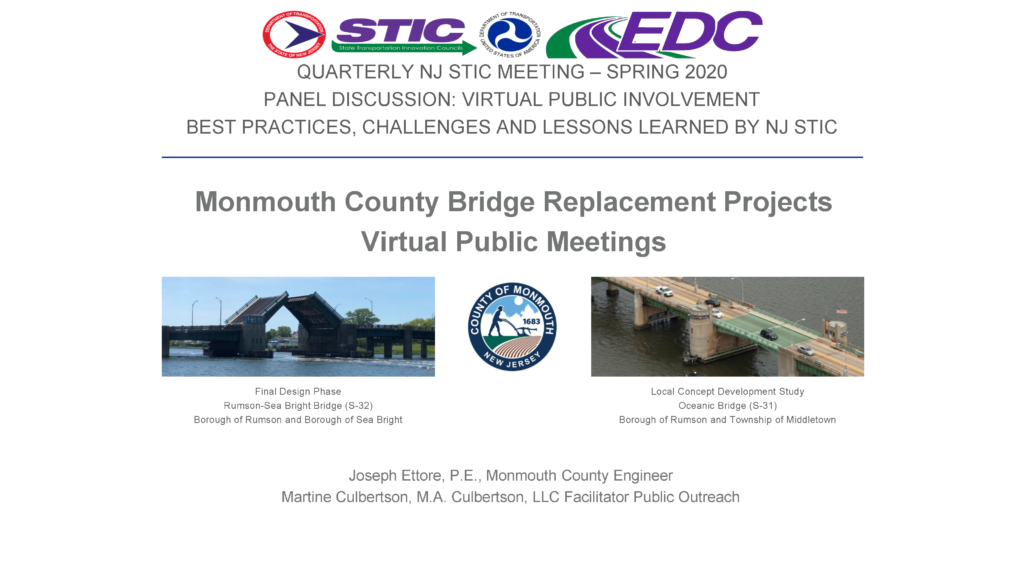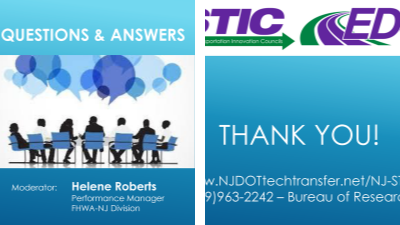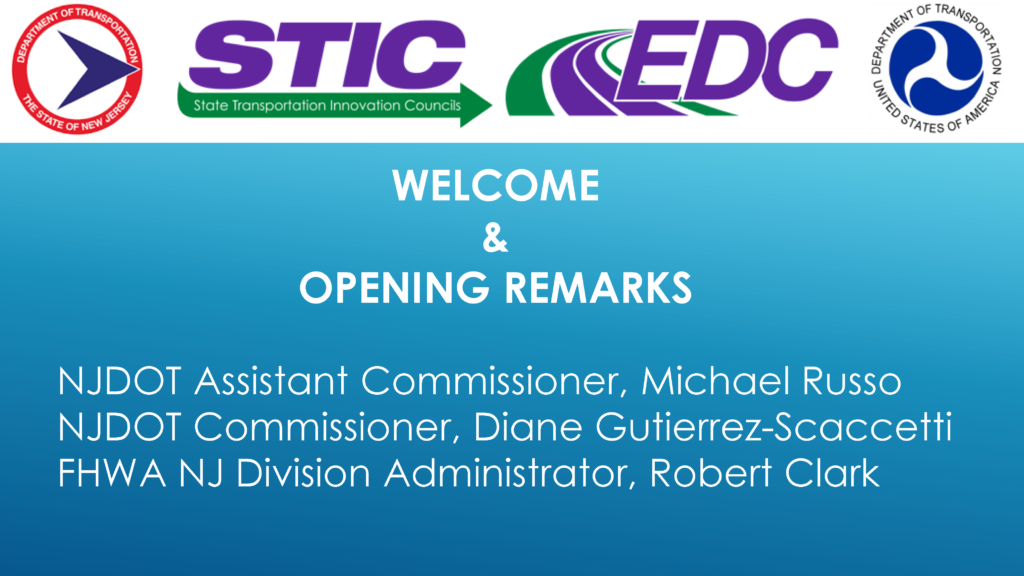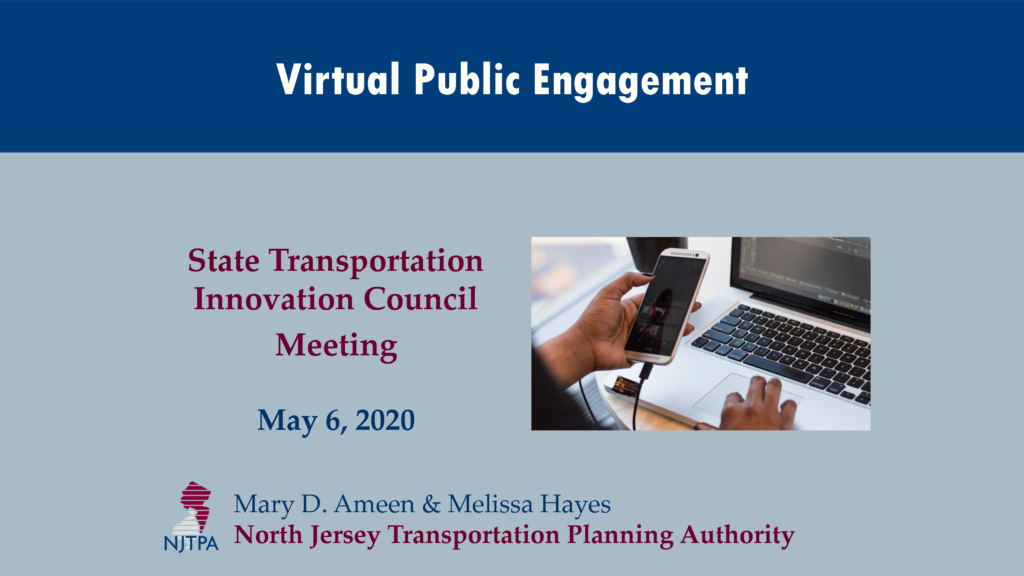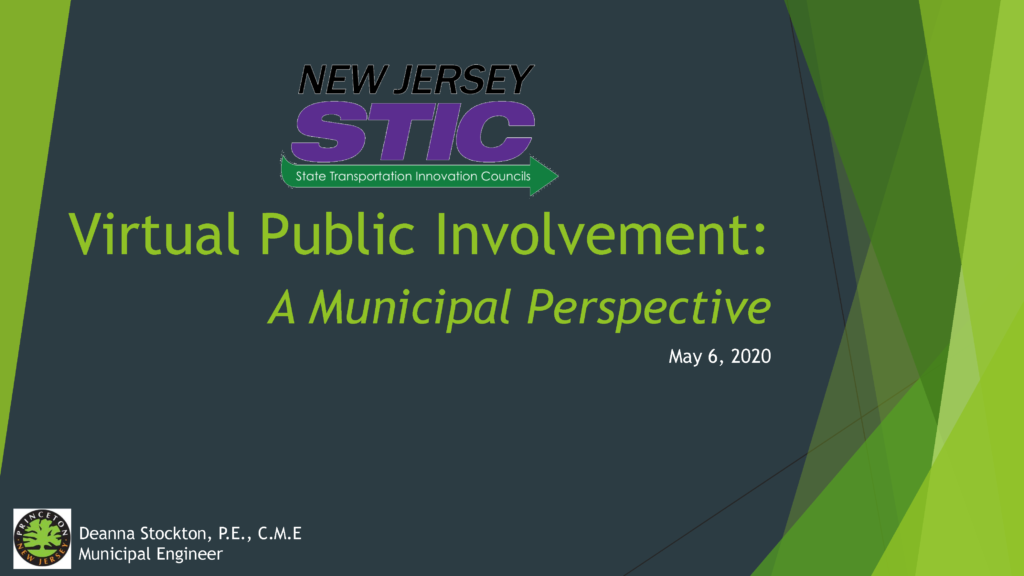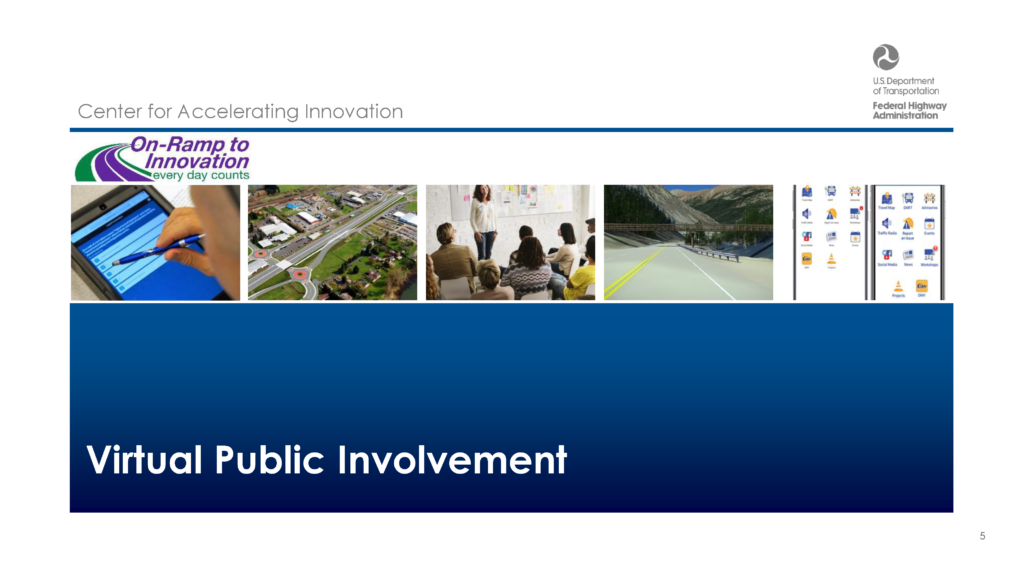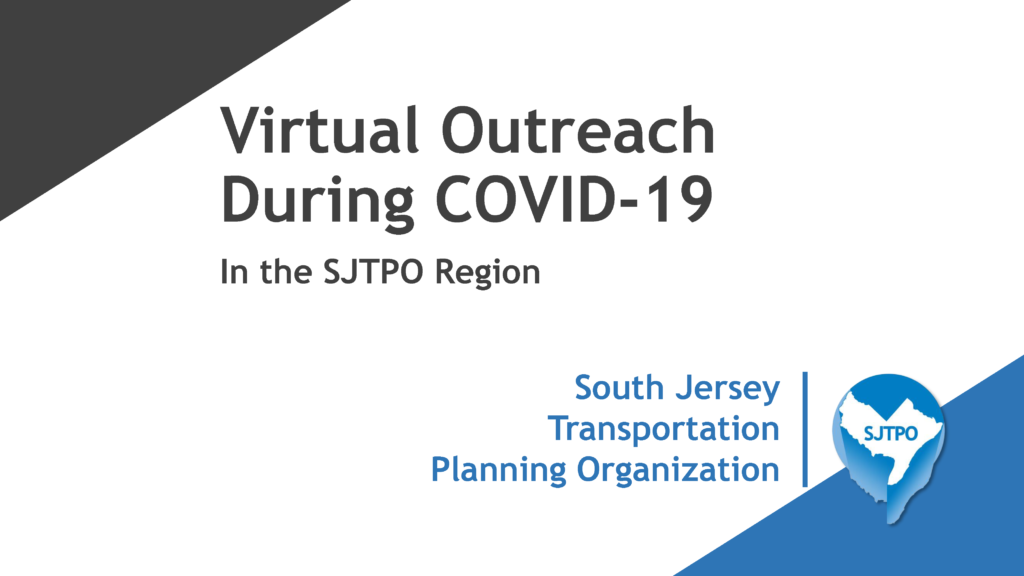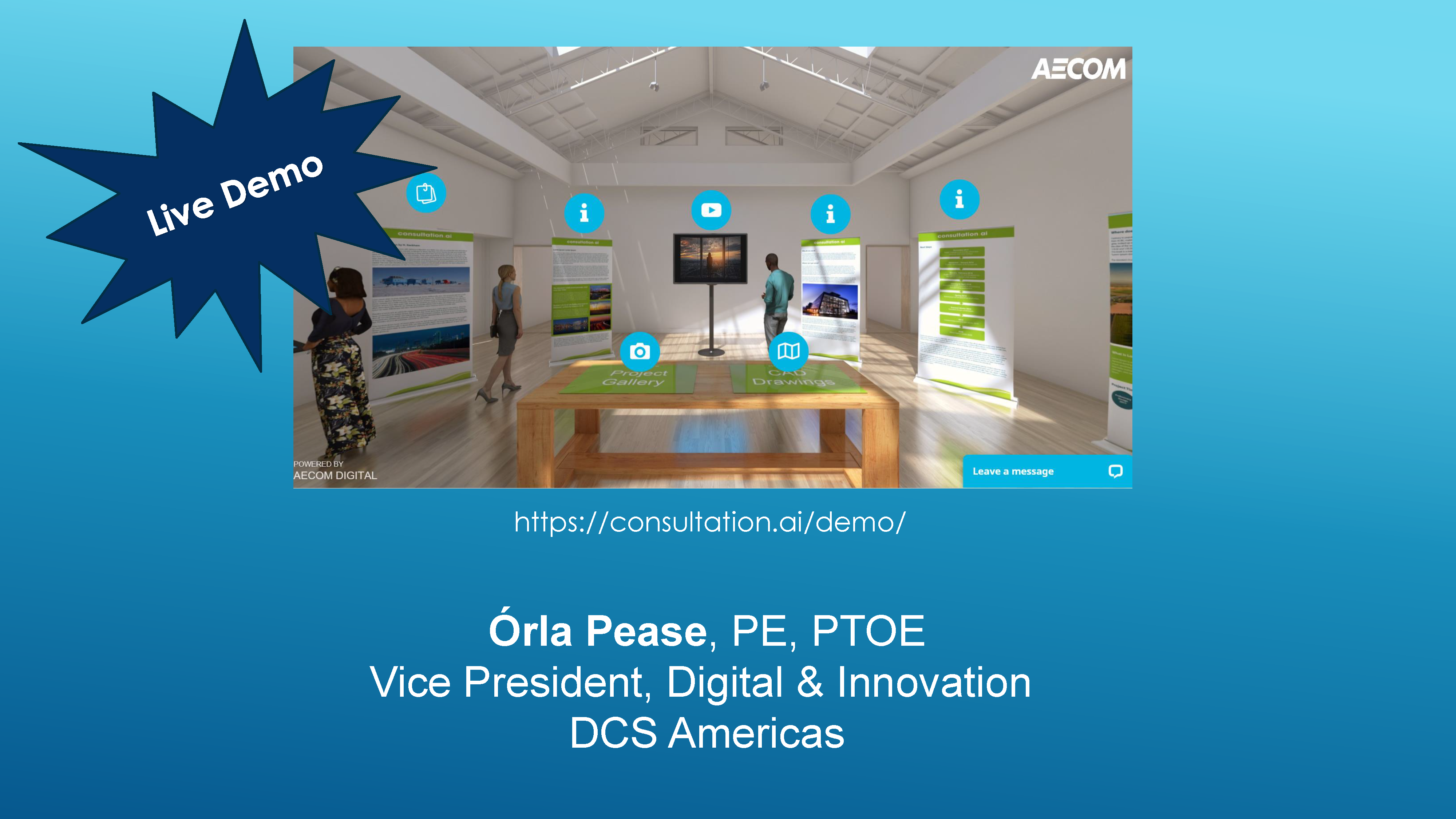The NJ State Transportation Innovation Council (NJ STIC) Spring 2020 Meeting focused on the EDC-5 Innovative Initiative Virtual Public Involvement. The topic was appropriate to the times as STIC members gathered for the group’s first virtual meeting in response to NJ Executive Order 107 in force during the COVID-19 pandemic. The STIC Meeting Agenda had been distributed to the invitees prior to the May 6, 2020 meeting. Participants could use the chat feature to offer comments or ask questions of the speakers during the meeting.
After his Welcome and Opening Remarks, Asst. Commissioner Michael Russo introduced NJDOT Commissioner Diane Gutierrez-Scaccetti who emphasized the distinction between virtual meetings, public meetings, and public hearings. She noted that NJDOT’s work continues during the lockdown and the agency will be instrumental in helping the state get back on its feet once re-opening begins. Division Administrator for the FHWA NJ Office, Robert Clark, and Amanda Gendek, Manager of the NJDOT Bureau of Research, rounded out the Welcome and Opening Remarks setting the stage for primary focus of the Spring Quarterly STIC meeting on the implementation of Virtual Public Involvement (VPI) in everyday activities of transportation agencies.
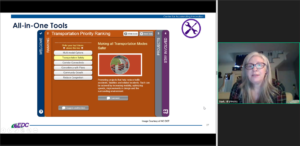
Jill Stark from FHWA reviewed online tools to increase public involvement (click for presentation)
The meeting continued with presentations from representatives of FHWA, New Jersey’s three Metropolitan Planning Organizations, Monmouth County, Princeton and industry discussing how they have adapted to the need for virtual public meetings and the benefits and challenges associated with the transition to the online formats.
VPI Tools and Techniques - Jill Stark and Lana Lau from FHWA presented several resources, such as mobile apps, crowdsourcing tools, project visualizations, and online mapping, to enhance public involvement and offered several examples of their use in other state transportation agencies. Ms. Stark noted that virtual public involvement will not replace in-person meetings but can supplement traditional engagement activities.
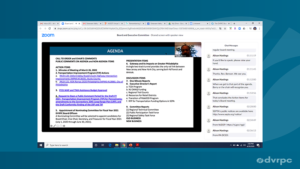
DVRPC used the chat feature during the board meeting to take public comment (click for presentation)
During their talk, the FHWA identified several resources, including webinars and fact sheets, available on Virtual Public Involvement. The agency is also creating videos that highlight innovative and virtual public engagement strategies in use in state and local transportation agencies. An article on the videos, including the fact that NJDOT and NJTPA activities were featured examples, was the subject of a recent post on the NJDOT Technology Transfer website.
MPO representatives reported on the need for quick technological transitions to remote work, experiences with online platforms, and related lessons learned.
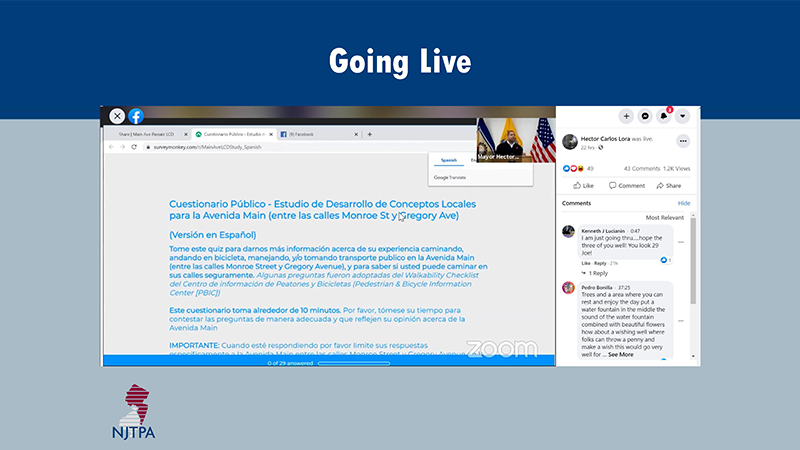
NJTPA’s online survey was available in translation and participants could leave comments (click for presentation)
DVRPC: Virtual Meeting Best Practices - Barry Seymour and Alison Hastings from DVRPC discussed increased public participation at their recent board meeting and the request for remote access to meetings going forward. Noting that reaching underserved communities just got harder, they emphasized features of their chosen meeting platform that increase accessibility, such as phone and computer audio, an app for cell phones, and closed captioning and audio channels for live translation.
Virtual Public Involvement - Mary Ameen and Melissa Hayes from NJTPA offered tips for online discussions, advocating for gearing the message to the audience, keeping meetings brief, providing multiple feedback options, and making the meeting mobile-friendly. Their Virtual Public Engagement Best Practices guidance is available online. They also offered examples from municipalities using online tools to reach their communities.
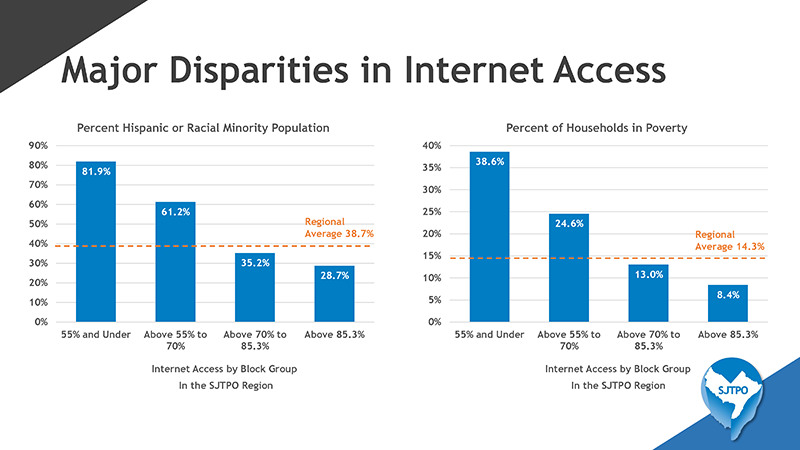
SJTPO is looking for alternatives methods of reaching populations lacking internet access (click for presentation)
Virtual Outreach During COVID-19 in the SJTPO Region - Jennifer Marandino and Alan Huff from SJTPO spoke about the agency’s dive into the issue of limited access to online public involvement opportunities in low-income and minority communities. They have discovered areas in their region that require focused in-person public involvement. The agency is delaying public involvement on major issues and exploring alternative means for reaching the region’s population.
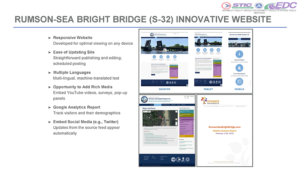
Monmouth County used a project website to inform the public and gather feedback (click for presentation)
Monmouth County Bridge Replacement Projects: Virtual Public Meetings – County Engineer Joseph Ettore and Consultant Martine Culbertson spoke about the limitations of virtual meetings and the impact on project development on two Bridge Replacement Projects in Monmouth County. The speakers discussed design of a project website, the challenges of virtual public meetings, how to proceed when a project faces some local opposition, and the need to keep projects on track to retain funding.
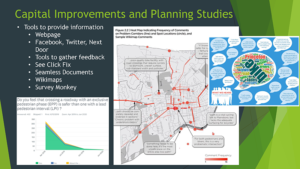
Princeton used various methods to track and display feedback from public involvement activities (click for presentation)
Virtual Public Involvement: A Municipal Perspective - Deanna Stockton, Engineer for Princeton, discussed the challenges related to bid openings, and holding council, zoning board and planning board meetings, and shared some useful resources. She noted the need to meet MLUL requirements and deadlines associated with zoning and planning board project reviews and discussed the creation of permanent digital files.
Industry Presentation: Virtual Consultation Platform - The final presentation, from Orla Pease and Andy Thomas of AECOM, offered a STIC industry partner perspective, and highlighted a new online virtual meeting platform. The meeting closed with a brief question and answer session.
The Spring Quarterly STIC meeting offered an abundance of useful information, tips, and lessons learned related to virtual public involvement tools and strategies.
A recording of the NJ STIC Spring 2020 Meeting can be found here and to the right. There was insufficient time to answer all questions posed during the session. Answers to these questions can be found here.
The NJ STIC Spring Virtual Meeting Presentation can be found in its entirety and in sections below.

